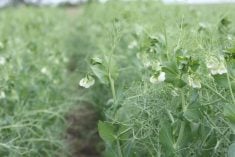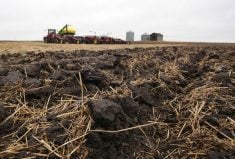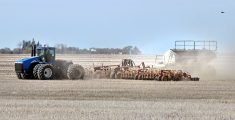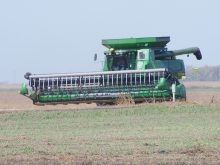The amount of greenhouse gas emissions attributed to livestock production depends on the scope of the life cycle analysis that is used
Canada is hiding the true amount that agriculture contributes to greenhouse gas emissions, says World Animal Protection.
Research commissioned by the global animal welfare group, which has offices in Toronto, concluded that emissions from Canadian agriculture are 91 million tonnes of carbon dioxide equivalents. That’s 30 million tonnes higher than official estimates from Environment Canada. The federal department’s National Inventory Report on greenhouse gas emissions says agriculture emits about 60 million tonnes in CO2 equivalents.
However, World Animal Protection and Navius Research, the Vancouver consultancy that crunched the numbers, says 60 million tonnes doesn’t tell the real story about ag emissions.
Read Also

Why feds imposed EV tariffs
Moe and Kinew have a fight on their hands when it comes to eliminating the EV tariff. Canada has to worry about pissing off the U.S. and Mexico and hundreds of thousands of auto workers.
“Canada’s reporting of its agriculture-related emissions is not comprehensive, with some of the emissions being classified under other industry sectors, including emissions from feed production, fertilizer production and fertilizer use, which are reported under ‘heavy industry,’ ” World Animal Protection said in an early November news release.
This hides the true impact of the agricultural sector, it said.
“Recent research by Navius … shows Canada produces 91 megatonnes of CO2 emissions from its combined agricultural sector,” the report says.
“This research was the first of its kind as it quantifies the real amount Canada’s agriculture sector emits in greenhouse gases.”
If Canadians cut meat from their diet or choose to eat less meat and less dairy, Canada can significantly reduce that 91 million number and help solve the climate crisis, World Animal Protection says.
“Reducing animal agriculture in the food value chain is a high-impact, low-cost solution to the global climate crisis,” said Lynn Kavanagh, World Animal Protection’s farming campaign manager.
Navius says livestock emit 40 to 50 million tonnes of greenhouse gases annually in Canada, in CO2 equivalents. Environment Canada says it’s more like 24 to 32 million tonnes with 24 million from enteric fermentation (methane) and eight million from manure management.
However, when scientists estimate greenhouse gas emissions, a lot depends on boundaries, said Tim McAllister, a research scientist in ruminant nutrition and microbiology with Agriculture Canada in Lethbridge.
When experts with Environment Canada count the emissions from a certain sector of the economy, they draw lines between industries.
“Production to the farmgate, or from the gate to the plate?” he asked. “What are the boundaries you’re setting up…. Obviously, the broader you make that boundary, the more emissions you’re going to capture (count).”
As an example, Canadians commuting to work in Toronto or driving their kids to hockey practice in Saskatoon in a Nissan Rogue produce a certain amount of emissions annually from burning fuel.
However, those emissions would be much larger if scientists counted every step required to manufacture that Nissan Rogue. There is the mining of the metallurgical coal, shipping that coal to Japan to make steel, turning that steel into the frame of the Nissan Rogue, the cost of heating the assembly plant to make the Nissan Rogue and so on. If it was an electric car, you could also count the entire process of making an electric battery.
“If you were to do a whole LCA (life cycle analysis) for a car, it should include the manufacturing of the steel, the plastic, everything that went into that car. Then you can get into the transportation associated with that material and the mining of the raw materials,” said McAllister.
So, yes, World Animal Protection can expand the boundaries to increase the emissions from Canadian agriculture, but that’s not how the Canadian government counts greenhouse gas emissions. Researchers with Environment Canada follow standard practices, which are also used in other parts of the world.
“I think they’re following similar approaches across countries. It’s not just willy-nilly, do whatever you want,” McAllister said.
As for the value of dietary changes, eating less meat and dairy could reduce greenhouse gas emissions in Canada, but that’s based on a number of assumptions.
For one, if Canadians cut their beef consumption by 25 percent, there’s no guarantee that cattle numbers would decline. Canada’s beef sector might export a larger share of production to Asia and other regions with growing demand for animal protein. Or Brazil might produce more beef to compensate for fewer cattle in Canada.
Also, it assumes that Canadian pastureland will remain in grass when cattle are taken off the land, McAllister said.
There’s about 50 million acres of tame and wild pasture in Canada. If millions of pasture acres are converted to cultivated land, there would be a short-term and longer-term increases in emissions.
“Emissions associated with livestock would go down (from eating less meat and dairy),” McAllister said. “Whether total emissions would go down or not, that’s still a bit of an unknown. If you’re removing something out of the sector, what is it being replaced with?”
There’s also the broader question of ecological diversity.
What happens to the wildlife that depend on Canada’s pasturelands for habitat? What does it mean for soil health and carbon storage in soil if there is less livestock and less manure in Canada?
“It’s too simplistic of an approach to solely look at GHG emissions,” McAllister said.
“You have to look at the integrated picture.”
















